When charged with designing a kitchen addition to this 1920s Tudor-style home in Arlington, Virginia, Donald Lococo first studied its essence—that which made the original house sing. What he found was clean-lined and straightforward—but fussy trim work added in the 1980s was out of sync with the structure’s natural simplicity. Taking cues from the steel-framed windows and white plaster throughout, the architect stripped the walls of all ornament to reveal a black and white canvas on which to begin anew.
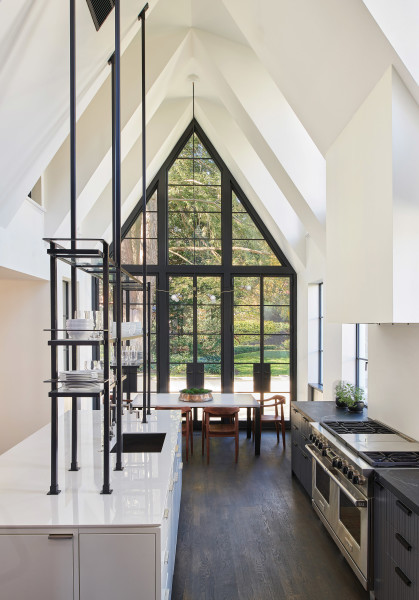
The 14-foot-tall tower above the kitchen island has steel I-beams and exposed bolting, and weighs roughly 3,300 pounds.
Anice Hoachlander
The stark color palette was carried into the new space, where one element in particular became a hyper-focused aspect of the project—namely, the custom-engineered structure above the island. The 14-foot-tall tower with steel I-beams and exposed bolting weighs roughly 3,300 pounds; building it was a mathematical feat. Secured to the rafters, its weight is transferred through the island and down to the floor joists below. Penetrating the island meant it encroached on usable space below. As a result, the structure was a significant concession on the clients’ part. Its inclusion meant other lost storage opportunities, such as the omission of upper cabinets.
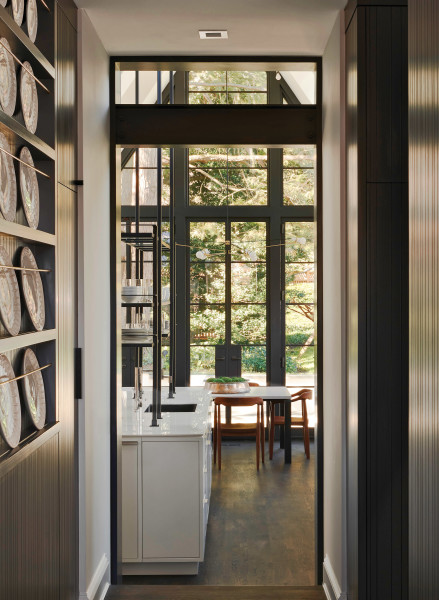
Sight lines through the spaces are open and generous.
Anice Hoachlander
“Adding that tower created less than perfect efficiencies,” Lococo concedes, noting that its fabrication also took much longer and cost a great deal more than anticipated. They maximized the use of this space to make it functional, but the bigger solution was to centralize service spaces. A second kitchen, a butler’s pantry, and generous cabinetry—as well as a laundry room—were grouped together at the center of the house to support the main kitchen. That move was fueled by the fact that the middle of the house receives the least amount of natural light, which they wanted to use to optimal effect in the main living areas.
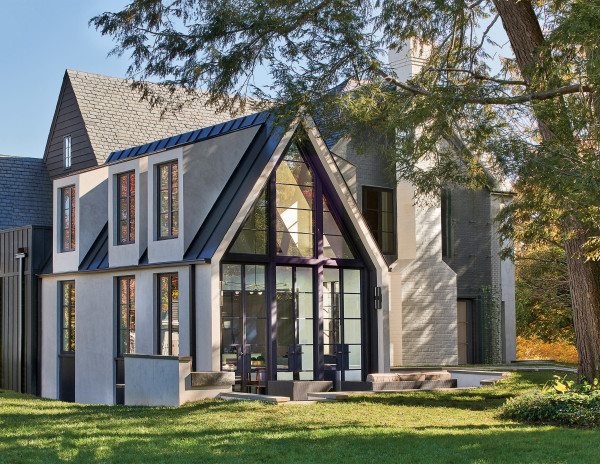
The clients said they wanted the addition to make a statement.
Anice Hoachlander
Plans for storing a wine collection changed when a former bomb shelter was discovered. Lococo made use of a concrete cavity by the stairway leading to the underground bunker. As a nod to its original function, the ceiling and walls were left exposed, as were indications of where a jackhammer was used to create the opening.
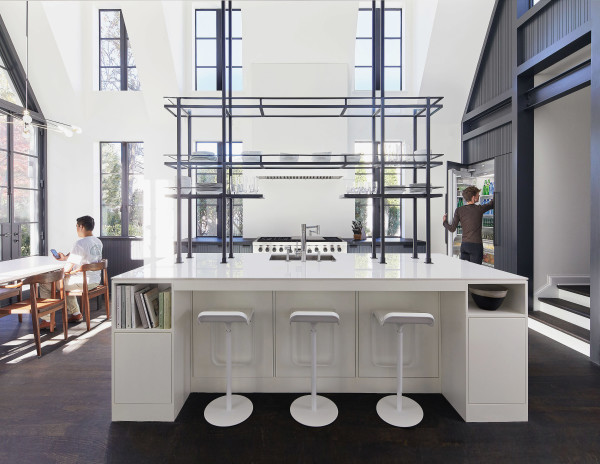
The island offers ample space for preparing meals, as well as informal seating.
Anice Hoachlander
To balance all of the black and white, Lococo designed kerfed panels as a signature detail. The asymmetrically scored and painted plywood sheets add texture and scale to the austere walls. “That one detail was carried through the entire house to be a continuum of one piece of architecture,” Lococo explains. “It’s the common thread.”
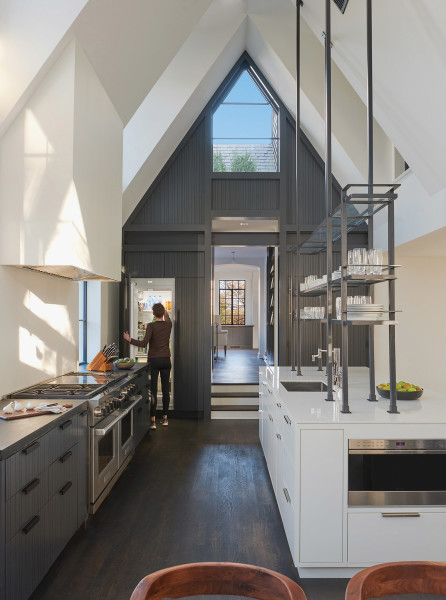
Architect Donald Lococo kept the room simple with a palette of black, white, and gray.
Anice Hoachlander
On the exterior, the addition falls in step with the idea of the house as a series of simple gable forms. Matching its roof pitch and subsequent ceiling angles to that of the existing building was key to blending the two masses. Inspired by those that dot the main house’s roof line, a pair of dormers on the new portion provide leafy views from the reconfigured master suite overlooking the new two-story volume.
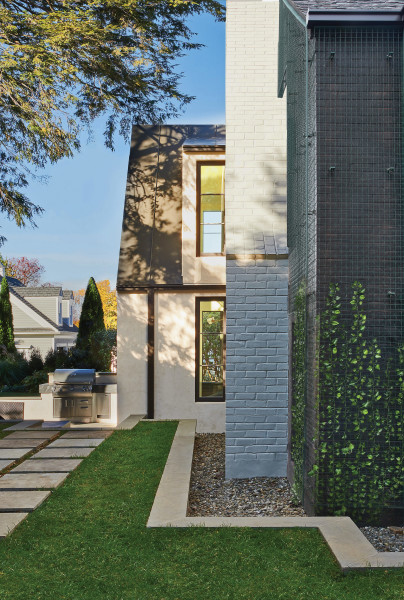
Landscaping is minimalist.
Anice Hoachlander
In the end, the team and clients agree that the steel tower was the project’s crowning achievement. “After all of the tension and the final birth of the thing, the owners love it,” Lococo says. “The real beauty is that it seems so effortless—so light and lacy—even though it required serious navigation and compromise.”
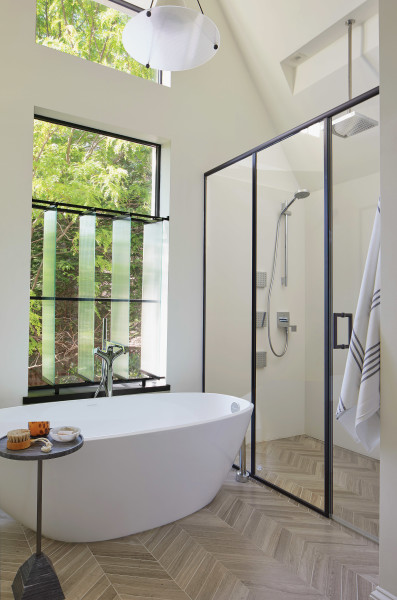
A deep soaking tub with a view is an amenity in the master bathroom.
Anice Hoachlander
Lococo describes the whole addition as having a “chiseled Tudor shape with an origami-like interior.” He believes the trimless treatment is “a perfect hinge between the existing and the new.” The clients, he explains, wanted a statement. And that is just what they got—in black and white.
Resources
architect Donald Lococo Architects, Washington, DC;







